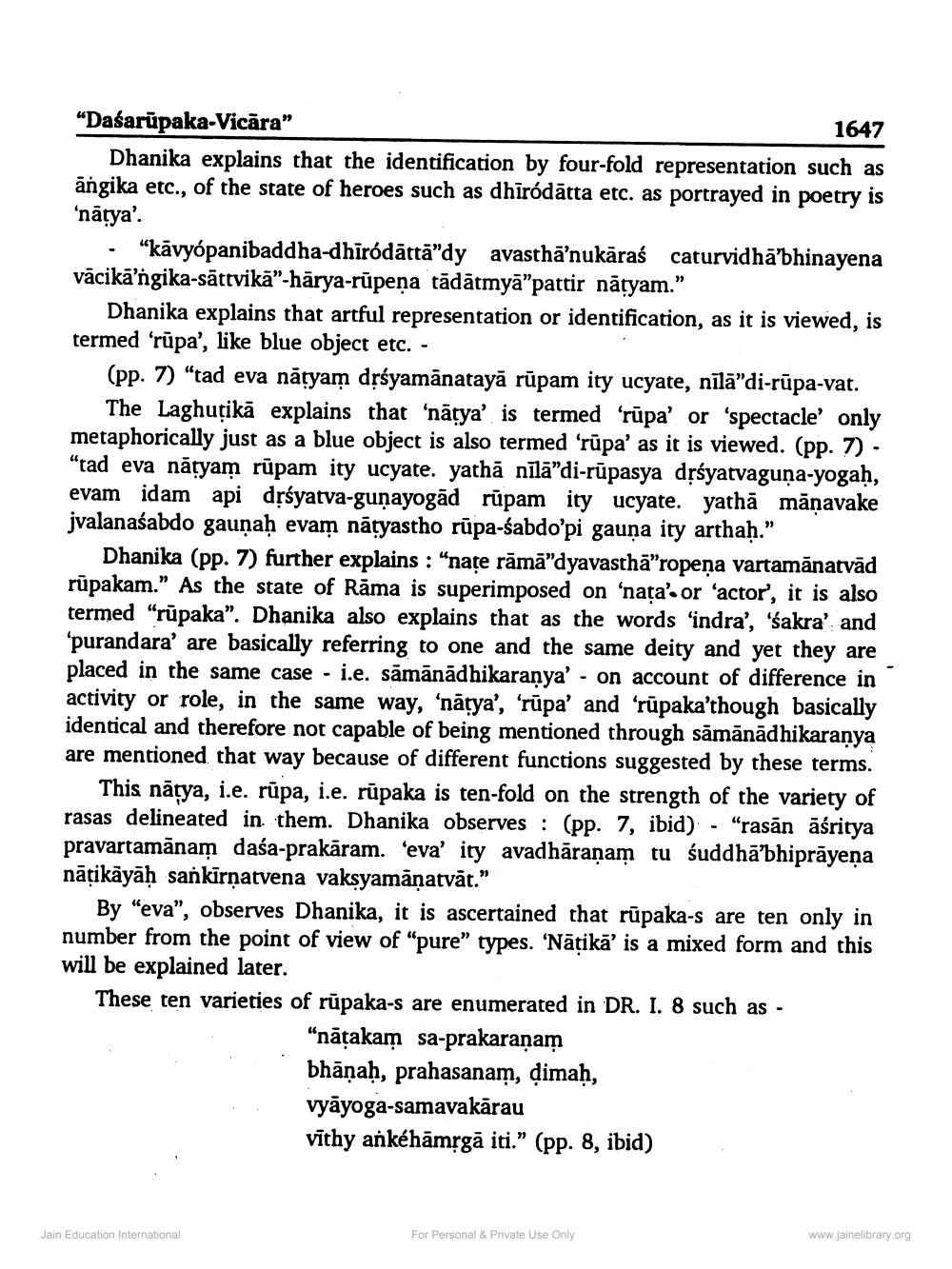________________
"Dasarūpaka-Vicăra"
1647
Dhanika explains that the identification by four-fold representation such as ängika etc., of the state of heroes such as dhiródātta etc. as portrayed in poetry is 'nārya'.
• “kāvyopanibaddha-dhīródāttā”dy avasthā’nukāraś caturvidhābhinayena vācikā’ngika-sāttvikā”-hārya-rūpeṇa tādātmyā” pattir nāryam.”
Dhanika explains that artful representation or identification, as it is viewed, is termed 'rūpa', like blue object etc. -
(pp. 7) "tad eva nătyam drśyamānatayā rūpam ity ucyate, nīlā”di-rūpa-vat.
The Laghuţikā explains that 'nātya’ is termed 'rūpa' or 'spectacle only metaphorically just as a blue object is also termed 'rūpa' as it is viewed. (pp. 7) - “tad eva nātyam rūpam ity ucyate. yathā nīlā"di-rūpasya drśyatvaguņa-yogaḥ, evam idam api drśyatva-gunayogād rūpam ity ucyate. yathā māņavake jvalanaśabdo gauņaḥ evam nāțyastho rūpa-śabdo’pi gauņa ity arthaḥ.”
Dhanika (pp. 7) further explains : "națe rāmā"dyavasthā"ropeņa vartamānatvād rūpakam.” As the state of Rāma is superimposed on ‘nata'. or 'actor, it is also termed “rūpaka”. Dhanika also explains that as the words 'indra', 'sakra' and 'purandara' are basically referring to one and the same deity and yet they are placed in the same case - i.e. sāmānādhikaranya' - on account of difference in activity or role, in the same way, 'nātya', 'rūpa' and 'rūpaka'though basically identical and therefore not capable of being mentioned through sāmānādhikaranya are mentioned that way because of different functions suggested by these terms.
This nārya, i.e. rūpa, i.e. rūpaka is ten-fold on the strength of the variety of rasas delineated in them. Dhanika observes : (pp. 7, ibid) - "rasān āśritya pravartamānam daśa-prakāram. 'eva' ity avadhāraṇam tu śuddhā'bhiprāyeņa nātikāyāḥ sankirnatvena vaksyamāṇatvāt.”
By "eva”, observes Dhanika, it is ascertained that rūpaka-s are ten only in number from the point of view of "pure” types. 'Nātikā' is a mixed form and this will be explained later. These ten varieties of rūpaka-s are enumerated in DR. I. 8 such as -
“nāțakam sa-prakaranam bhāṇaḥ, prahasanam, qimaḥ, vyāyoga-samavakārau vīthy ankéhāmțgā iti.” (pp. 8, ibid)
For Personal & Private Use Only
Jain Education International
www.jainelibrary.org




